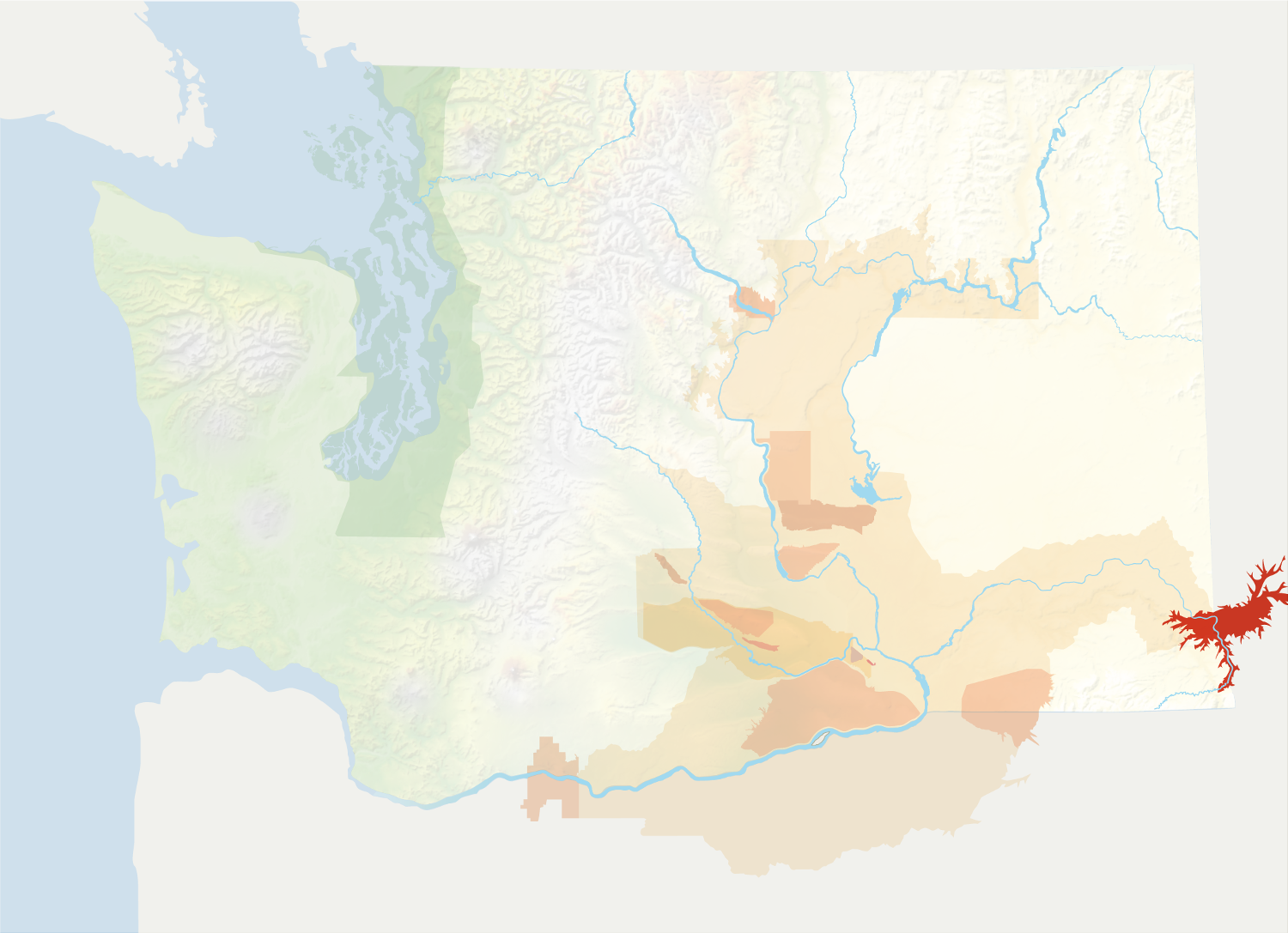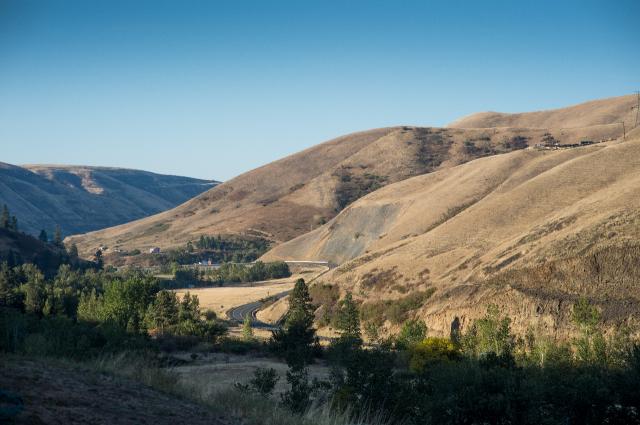Location: South-eastern Washington and north-western Idaho
Designated: 2016
Total Size: 306,658 total acres, 85,864 in WA
Acreage Under Vine: Total vineyard acreage: 100 (40 Hectares); Washington acreage: 9 (4 Hectares)
Top Varieties: Chardonnay, Pinot Noir, Merlot
Soils: Loess and Mollisols from bunchgrass roots
Average Annual Precipitation: 11-22 inches
Two Things to Know:
- Lewis-Clark Valley is a young appellation but with a long grape growing history.
- The appellation is defined by steep canyons and low benchlands.
Lewis-Clark Valley straddles the Washington-Idaho border and is bisected by the Snake and Clearwater rivers. It is nestled in the mountainous backbone of northern Idaho, the Bitterroot Mountains. It is one of Washington’s few appellations that lies outside the boundaries of the Columbia Valley, abutting that appellation’s south-eastern edge.
Named after the explorers Meriwether Lewis and William Clark, grapes were first planted in this region in 1872. However, most modern-day plantings have gone in since the late 1990s.
The appellation is defined by steep canyons and low benchlands. The valley is often referred to as a “banana belt” because of its temperate climate amid colder surrounding regions. In addition to vinifera grapes, this climate produces high quality tree fruit, such as peaches and apples, as well as exceptional wine and table grapes.

The appellation is directly below originating watersheds of the Palouse and Camas Prairies. The steep V-shaped valley allows for good drainage, providing frost protection and cool nighttime temperatures for acid retention and flavor development. Annual precipitation varies between 11-22 inches, enough that minimal irrigation is needed.
Lewis-Clark Valley AVA’s soils are comprised of decomposing perennial grasses and grass roots with capacity to hold water. The majority of soils contain loess, or wind-deposited, nutrient-rich silt. The region has planting areas that are easy to develop and contain air drainage characteristics that are ideal for wine grapes.
This is the only AVA in Washington that crosses into Idaho, also known as a cross-border AVA.

